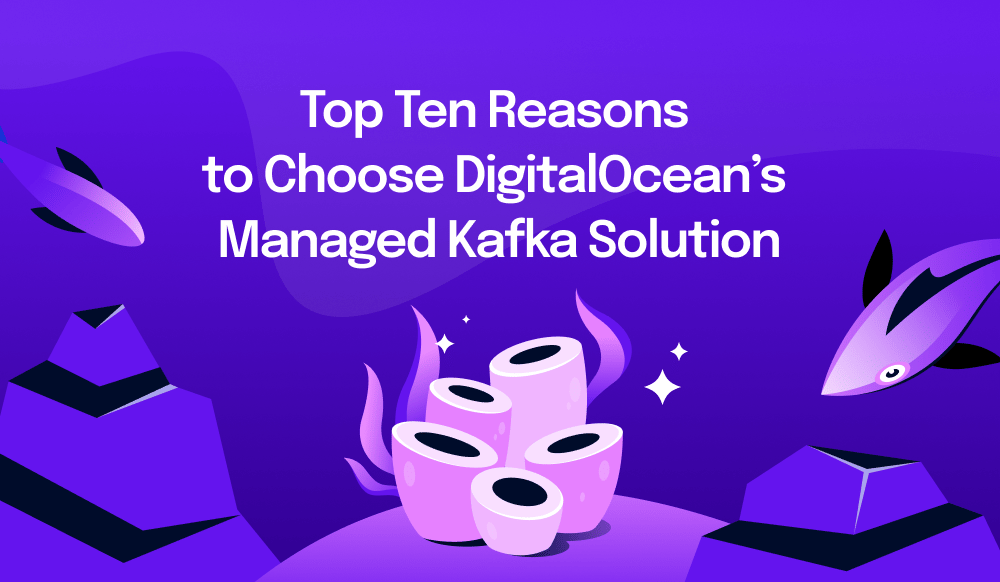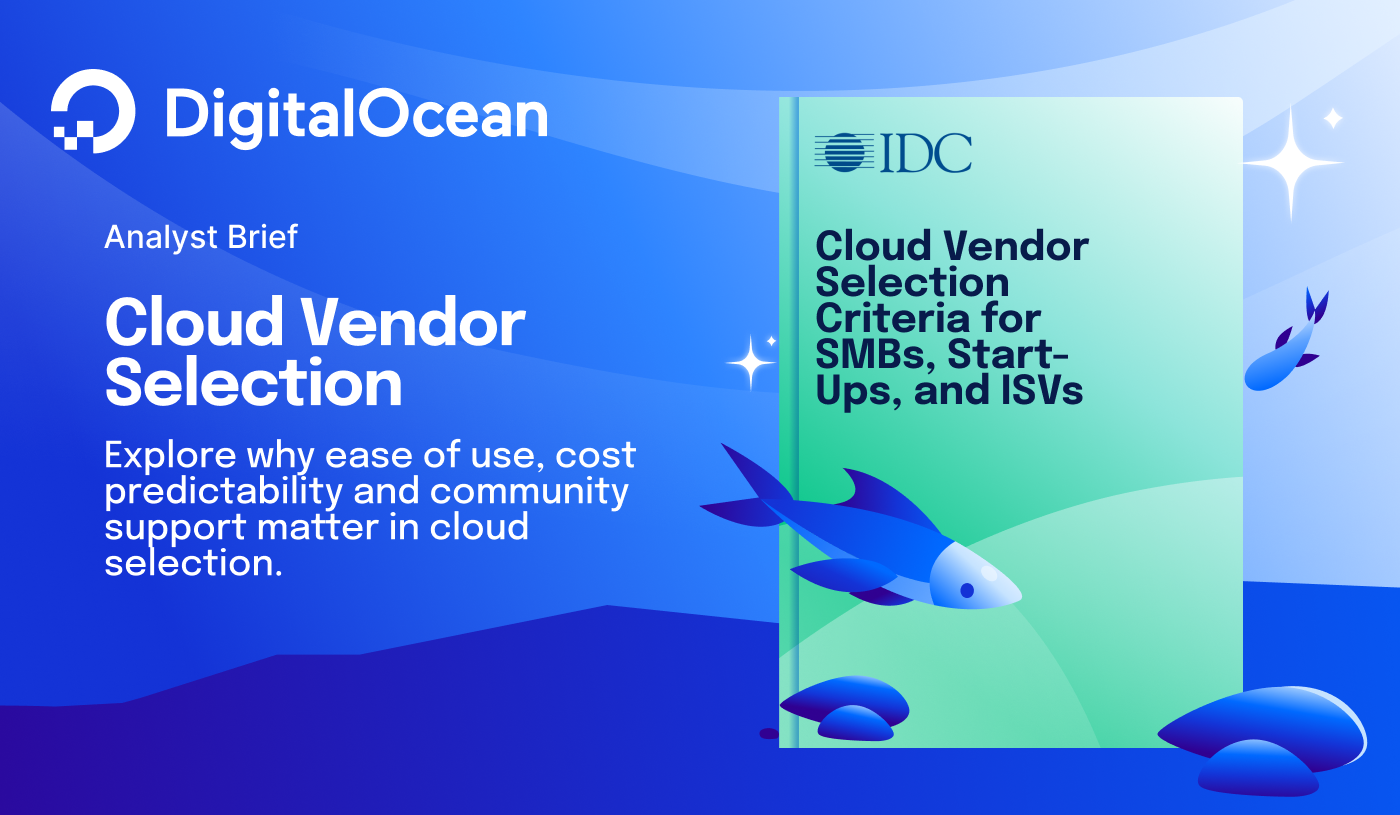What is IaaS? Infrastructure as a Service Explained
Brittany King
Infrastructure as a Service (IaaS) is a cloud delivery model that provides on-demand computing resources over the internet, including networking, storage, and other infrastructural components. IaaS allows users to develop, grow, and scale without buying and maintaining physical hardware. The power and flexibility of IaaS enable it to support a wide variety of businesses, developers, researchers, and other individuals who want control over their infrastructure and the software inside that infrastructure.
Before IaaS, businesses would have to purchase and maintain their hardware and software for their computing needs. This was expensive to implement, with a high purchase cost of the hardware, and costly to maintain, requiring individuals with technical expertise to dedicate significant amounts of time to the upkeep of the physical infrastructure. Scaling apps was also difficult because companies were often constrained by the capacity of their on-premise infrastructure. IaaS helps lower IT costs significantly, allowing organizations to reallocate that money to development. It’s also flexible enough to allow businesses to scale, promoting rapid growth alongside financial savings.
IaaS vs. PaaS vs. SaaS: What’s the difference?
There are several delivery models for cloud computing, typically done through Infrastructure as a Service (IaaS), Platform as a Service (PaaS), or Software as a Service (SaaS). There are fundamental differences to each delivery model and pros and cons for each depending on the user’s needs.
With IaaS, users can choose the level of control they have over their infrastructure, but they don’t have to control or manage the physical hardware. Developers can set up their infrastructure and decide what layers of abstraction they want. To make maintaining their application easier, they can layer in things like load balancers or even managed services like Managed Kubernetes or Managed Databases.
With PaaS, users no longer have to manage the operating system, runtime, or other infrastructural components of their application. PaaS is great for developers who don’t need to customize their underlying infrastructure, as it provides a fully managed solution. When a developer chooses to use PaaS, all they have to consider is their code. They can focus on the development work they are trying to do and let the provider manage backend services and system administration. Once they upload their code and their application is live, their job is done. PaaS products are very powerful and make it easier to scale, rapidly iterate, and quickly deploy.
SaaS is a software delivery model in which a third-party vendor provides the software application over the internet. SaaS applications are typically built inside cloud infrastructures and can be accessed from anywhere with an internet connection. With SaaS, users have access to software provided by third-party vendors but are not in charge of the production, maintenance, or modification of that software. Users are only exposed to the interface they interact with.
IaaS Architecture
IaaS is broken into three main components: compute, network, and storage. With these offerings, users have the building blocks they need to create their customized systems, as complicated or powerful as they need, and the ability to scale up and down based on current needs.
Compute
Foundational IaaS computing resources begin with servers. Servers are powerful computers that tend to have hundreds of Central Processing Units (CPUs), hundreds or thousands of gigabytes (GBs) of Random-access memory (RAM), and thousands of GBs of storage. Servers are expensive to buy and costly and difficult to maintain. IaaS providers maintain datacenters that house the physical, bare-metal servers. These physical servers can be partitioned using a hypervisor into smaller “virtual machines”. These virtual machines can run their OS and applications independently while sourcing power from the bare-metal server.
There are different ways to set up a virtual machine (VM), and the architecture you choose will depend on your needs and the level of abstraction you prefer. For example, developers can
Use Kubernetes to containerize their code so that namespaces, which are like smaller, lighter VMs, serve only one purpose, like running an application. Kubernetes then orchestrate or manage those containers for the developer, managing traffic and automatically scaling the application up and down as needed. Compute offerings often include optional add-ons like load balancing, which automatically distributes network traffic to prevent system overload.
When users purchase a virtual machine through an IaaS provider, they choose the operating system, often referred to as an image, and applications run on that machine. Developers can easily scale vertically by adding more CPU if their VMs don’t have enough processing power or scaling horizontally to increase instances and handle more load. Virtual machines can often be quick and easy to set up. For example, DigitalOcean’s virtual machines, Droplets, can be spun up in under a minute.
Storage
Storage options are threefold: file storage, object storage, and block storage.
File storage is similar to what we have on our computers at home and stores data as a single entity into a file. The files can exist within each other as other data, so it’s hierarchical. For example, a path for file storage could be “/home/photos/selfie.jpg”. Object storage instead takes saved data as a single entity and appends metadata and an identifier. Object storage deals with whole objects stored over the network. These objects could be things like an image file, logs, or HTML files. Object storage is the most popular option because of its simplicity and cost savings. Block storage is likely underneath the file or object storage. Block storage services are relatively familiar. They provide access to a traditional block storage device over the network and attach it to your virtual machine. It takes data and saves it as blocks of actual bytes or bits. It has advantages over the other two by being faster to transfer data but not user friendly unless abstracted by a file system like in your computer that uses it.
Network
The network function talks to the storage function, other VMs, containers, other servers, the internet, the intranet, and other components. It’s how information is transferred through the architecture regardless of endpoints. Users will need different networking bandwidths depending on the amount of data transmitted between computing resources.
Benefits of IaaS
Iaas is a popular option for all kinds of businesses, especially new businesses, because it allows them to scale up and down as needed and avoid the hassle and cost of maintaining servers themselves.
There are several advantages to IaaS:
- Cost: Users can avoid the upfront costs and significant overhead of buying and maintaining their physical datacenters. They can pay only for what they need every month, meaning costs will go up and down with usage.
- Scale: IaaS allows users to scale easily and quickly as demand increases, either automatically or with minimal management and resources.
- Availability: Having multiple datacenters to choose from allows users to host their applications closer to their end customer, decreasing latency and providing a better customer experience.
- Increased stability and reliability: With IaaS, users don’t have to worry about technical maintenance, software updates, or troubleshooting equipment issues. IaaS providers also give users an uptime guarantee, so they know their services will always be available.
- Disaster recovery: The ability to recover or access applications should there be a disaster or an outage without the high costs of extra tech and staffing.
- Speed and flexibility: Users can have an IaaS application up and running in a matter of minutes and quickly can scale up and down based on demand and business growth. Flexibility allows developers to quickly test new ideas and pivot when necessary.
Who uses IaaS?
IaaS has multiple applications that span industries, company sizes, and business needs. Startups and small companies may prefer IaaS to avoid the high costs of purchasing and maintaining hardware and software, and companies experiencing rapid growth like the scalability of IaaS. Larger companies may want the ability to buy only the space they will use. They also often use IaaS for redundancy in their setup and to take advantage of the high availability of public cloud providers.
Some common use cases for IaaS are:
Website hosting: IaaS provides flexible hosting options for developers looking to get their websites up and running quickly and reliably. Using cloud services also allows builders to easily maintain and scale their sites as they grow.
Startups: IaaS allows startups and other small businesses to avoid the high cost of purchasing and maintaining physical hardware to sustain a cool new idea. A startup in a rapid growth period can enjoy the scalability of IaaS.
Testing and development: IaaS allows teams to quickly set up and tear down testing and development environments, allowing new applications to make it to market more quickly.
Storage and backup: Using IaaS for data storage and backup allows an organization to maintain resiliency without the significant overhead of additional on-site hardware. Using an IaaS provider can also help the team manage legal and compliance requirements that may otherwise be difficult to understand or implement.
Building and maintaining web applications: IaaS provides the infrastructure needed to support web applications, such as storage, servers, and networking resources. Web applications can be quickly deployed on IaaS and then can continue to scale up and down with demand, providing reliability for the platform and cost savings for the team.
High-performance computing needs: Organizations can solve complex problems and conduct detailed research and data analysis using supercomputers and computer grids or clusters. IaaS can provide the infrastructure to maintain those needs. Game developers and streaming services also utilize IaaS for flexibility, maintaining low latency, and saving bandwidth.
Considerations when using IaaS
IaaS is a fantastic solution, and users of all kinds can benefit from the power and flexibility it provides. When exploring IaaS as the solution for your application, there are a few considerations to take into account.
Regulation
Some industries, such as healthcare or the financial industry, have strict regulations about the storage and use of customer data and may not allow customer data to be stored in public clouds. Organizations also need to consider the data protection and privacy laws in the location where their services are used.
Security
All the major cloud providers are regulated and have stringent security requirements, along with entire security teams and other experts dedicated to keeping information safe. Still, cloud services are open to some security threats. While these instances are extremely rare, it’s a good idea to find out how the cloud service provider secures data and how they recommend customers further secure their data.
Additionally, customers running legacy apps in the cloud may find that the infrastructure is not designed to secure the legacy apps, possibly leading to new security issues. This is highly variable and would depend on the technology being used.
Data loss
While extremely rare, cloud services can permanently lose stored data due to physical disasters, bugs, user-generated errors, or other issues, just like physical devices. When choosing an IaaS provider, find out what backup services they offer and if there’s an extra cost for those services. You may also run backups yourself.
Data persistence
Providers may use data for various things, like understanding the use of their product, selling or personalizing ads, or training machine learning algorithms. Find out what a provider’s policies are for using and deleting data before giving them access.
Vendor lock-in
Users of proprietary cloud services may be at more risk for vendor lock-in. Using open-source cloud solutions makes it easier to migrate computing operations from one provider to another.
Loss of user control and visibility
Using third-party computing resources makes it difficult for users to have complete visibility and control over their computing environments. Implementing monitoring and analytics tools that update users on infrastructure performance mitigates some risk.
What to look for in a provider
A great support team
Customer support should be easily reachable by phone, email, or chat. An extensive knowledgebase is excellent, but make sure that there’s someone to reach out to if you need additional guidance, and make sure that person is knowledgeable and available.
A variety of options
Can you get both managed and unmanaged products? Even if you don’t need managed services now, you should have the option to use managed products in the future if your needs change as you grow. Can you easily integrate with other systems and software? Does the provider have a strong record of partnerships across the industry? A provider that offers a variety of solutions and integrations is crucial as you seek solutions for your needs.
Quality hardware and security
It’s essential to use a provider that maintains high-quality tech and hardware. You need dependable servers and networks. You also need layered security that you can trust and will help you meet compliance standards.
Local datacenters
The closer your datacenter is to you or your users, the better. Look for a provider that has datacenters all over the world.
Reliability
What does your provider have in place for backup and recovery? Can they ensure continuous operation and resiliency in case of emergencies? They should clearly articulate their backup plans and provide clearly defined SLAs.
Scalability
How fast can you spin up a virtual machine? Can you pause, update or duplicate on demand? Can you scale up and scale down seamlessly? Your provider should be able to support scaling up and down either through a managed application or through a minimal manual effort from your team.
IaaS Pricing
Though IaaS can provide services at significantly lower costs than owning and managing a datacenter, prices often increase with usage. Check the billing details to learn how pricing is handled and if you can set caps or notifications for overages, and how billing details are communicated. Some providers’ billing details aren’t always easy to understand. Billing can even be unpredictable and jump more than expected with usage. Look for a provider that clearly explains the pricing model and offers predictable pricing.
Common IaaS pricing generally follows one of these models:
Subscriptions: Some providers offer discounts for customers who commit to longer contract terms. Pricing for subscription-based services can be more favorable but also locks you into a vendor for a set amount of time, which can be a disadvantage if your needs change or your experience with that vendor is not up to your expectations.
Pay-as-you-go: The most common way for traditional IaaS providers to bill is by the hour/second, and users are only charged for what they use. This is beneficial in that generally, a pay-as-you-go model enables you to switch cloud providers easily if needed, and your bill may go up and down depending on usage. However, it can also lead to unexpected increases in cost if usage goes up and pricing models are not always clear.
Interested in learning more about IaaS and if it’s right for your business? DigitalOcean offers a variety of simple solutions and products that meet developer needs. Explore what you can do with DigitalOcean’s IaaS offerings and predictable pricing model.
Related Articles

Top 10 Reasons to Choose DigitalOcean’s Managed Kafka Solution
Faye Hutsell
April 23, 2024•4 min read

Accelerate Your Business with DigitalOcean App Platform
Bikram Gupta and mfranco
April 1, 2024•5 min read
